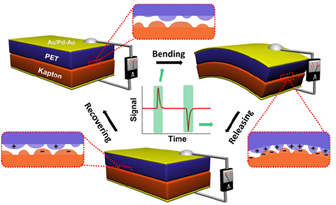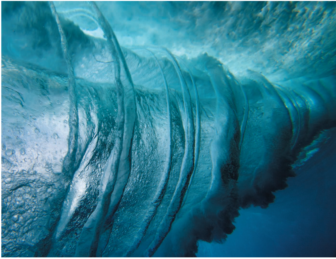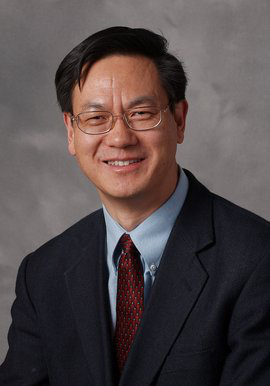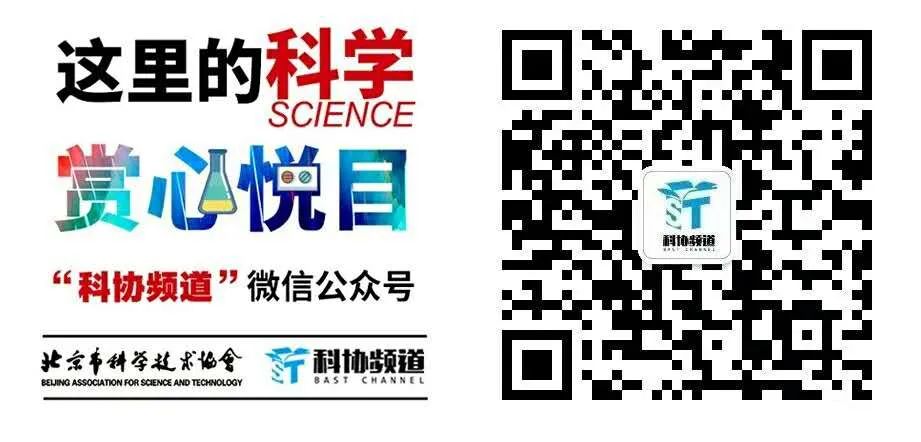 Nanogenerators are a significant innovative breakthrough in the way and technology of energy acquisition, opening up a new research field of nano energy and self-driven sensors. The advent of nanogenerators completely breaks the limits of human understanding of the size of “generators,” making the miniaturization of energy systems possible, representing a new understanding and exploration of energy acquisition methods.
Nanogenerators are a significant innovative breakthrough in the way and technology of energy acquisition, opening up a new research field of nano energy and self-driven sensors. The advent of nanogenerators completely breaks the limits of human understanding of the size of “generators,” making the miniaturization of energy systems possible, representing a new understanding and exploration of energy acquisition methods.

(Image source: Internet)
Nanogenerators are not only a new energy technology but also an energy technology for the new era of the Internet of Things and sensor networks.The invention of nanogenerators was initially aimed at self-driving, utilizing environmental energy to sustain battery operation, driving tiny electronic devices, and will have significant applications in the fields of the Internet of Things, artificial intelligence, sensor networks, big data, as well as security, healthcare, environmental protection, and many wearable electronic products.
Moreover, the network of triboelectric nanogenerators “has the potential to harvest a large amount of energy from ocean waves to address the world’s future energy needs”. This original idea of “blue energy” may solve the problems that traditional electromagnetic generators have been unable to address for a century, fundamentally enabling humanity to acquire sustainable large-scale energy.

(Image source: Internet)
So what is the principle of blue energy technology?The basic idea of blue energy is to use a network of triboelectric nanogenerator units, sealed in a closed package, deployed on the ocean surface and at certain depths underwater, to absorb ocean energy and convert it into electrical energy through triboelectric nanogenerators. The electrical energy from each unit converges to form a massive energy source.
Due to the far superior efficiency of nanogenerators over traditional electromagnetic generators at low frequencies, they achieve functions that traditional technologies cannot, representing a disruption of a century of power generation technology and bringing new opportunities and hopes for the development and utilization of ocean energy.
What other potential applications does the nanogenerator have? What is its future development prospect??2020 Beijing Region Widely Discussed Academic Achievements Series Report (New Materials Field)In the special session at Huairou Science City, guest speaker Academician Wang Zhonglin provided insightful answers to related questions. Let’s take a look!
 01.You successfully developed the world’s smallest generator—the nanogenerator—and are known as the “Father of Nanogenerators.” Could you introduce the nanogenerator, its current application fields, and its potential application value?Academician Wang Zhonglin:Nanogenerators are actually small devices that convert mechanical energy into electrical energy. They can harness energy from natural sources such as walking, running, mechanical vibrations, wind, and ocean waves to generate electricity. Currently, there are mainly two types: piezoelectric nanogenerators that utilize the piezoelectric effect of materials and triboelectric nanogenerators that utilize the triboelectric effect. Nanogenerators represent a new energy technology and are also an energy technology for the new era of the Internet of Things and sensor networks, representing a research field.Nanogenerators provide a solution for new era energy, which is a distributed energy solution aimed at a vast number of low-power devices. They have significant applications in micro-nano energy, self-driven sensing, blue energy, and high-voltage power sources. For example, they can collect biomechanical energy from the human body, such as energy from running, walking, tapping, and touching, to drive smart wearable devices, multifunctional sensors, and for self-driven and continuous measurement of human pulse and blood pressure. They can also be used as implantable medical devices to power pacemakers. Thousands of nanogenerator units can be connected to form a large-scale network, providing a new method for collecting low-frequency, random, and stochastic large-scale blue energy. They can also serve as new high-voltage power sources, playing important roles in MEMS, mass spectrometry, microplasma, and environmental protection. The main applications of nanogenerators will significantly contribute to the distributed energy needs of the Internet of Things, sensor networks, robotics, and artificial intelligence, presenting substantial commercial opportunities in the future.
01.You successfully developed the world’s smallest generator—the nanogenerator—and are known as the “Father of Nanogenerators.” Could you introduce the nanogenerator, its current application fields, and its potential application value?Academician Wang Zhonglin:Nanogenerators are actually small devices that convert mechanical energy into electrical energy. They can harness energy from natural sources such as walking, running, mechanical vibrations, wind, and ocean waves to generate electricity. Currently, there are mainly two types: piezoelectric nanogenerators that utilize the piezoelectric effect of materials and triboelectric nanogenerators that utilize the triboelectric effect. Nanogenerators represent a new energy technology and are also an energy technology for the new era of the Internet of Things and sensor networks, representing a research field.Nanogenerators provide a solution for new era energy, which is a distributed energy solution aimed at a vast number of low-power devices. They have significant applications in micro-nano energy, self-driven sensing, blue energy, and high-voltage power sources. For example, they can collect biomechanical energy from the human body, such as energy from running, walking, tapping, and touching, to drive smart wearable devices, multifunctional sensors, and for self-driven and continuous measurement of human pulse and blood pressure. They can also be used as implantable medical devices to power pacemakers. Thousands of nanogenerator units can be connected to form a large-scale network, providing a new method for collecting low-frequency, random, and stochastic large-scale blue energy. They can also serve as new high-voltage power sources, playing important roles in MEMS, mass spectrometry, microplasma, and environmental protection. The main applications of nanogenerators will significantly contribute to the distributed energy needs of the Internet of Things, sensor networks, robotics, and artificial intelligence, presenting substantial commercial opportunities in the future. 02What research achievements do you and your team have in the theoretical and applied research of nanomaterials science?Academician Wang Zhonglin:(1) We established a theoretical framework for nanogenerators based on the first principles of classical electrodynamics. For the first time, we introduced the polarization effect caused by non-electric fields into Maxwell’s equations, proving that displacement current is the theoretical root of nanogenerators, expanding the application of displacement current in the energy field.(2) We elucidated the scientific mechanism of the ancient physical phenomenon of triboelectricity from a theoretical perspective, successfully solving a mystery that has remained unsolved for 2600 years since ancient Greece. We proposed a universal electronic cloud overlap model, revealing the fundamental mechanism of charge transfer between materials, and introduced the “Wang hybrid layer model” to describe the charge distribution at the liquid-solid interface, revising the traditional double-layer model.(3) In the field of intelligent tactile sensing systems, we developed highly flexible and stretchable tactile sensors, enabling parallel collection of multiple physical quantities, and advanced the important applications of intelligent tactile sensing systems in wearable smart devices and smart robot motion control.(4) In the area of self-driven electronic medical devices and systems, aimed at the diagnosis and treatment of major clinical diseases, we successfully developed the world’s first biologically self-powered fully implantable symbiotic pacemaker, making significant progress towards the goal of “one-time implantation, lifelong use” for pacemakers.(5) In the field of ocean blue energy, we achieved important results in optimizing the performance of ocean energy harvesting devices and their networks, energy management, and self-driven applications in marine environments.(6) In the industrialization of air purification and automotive exhaust treatment, we developed efficient self-driven air purification devices (mainly triboelectric air purification systems and triboelectric masks). The industrialization company we established (Zhongke Naqing) is operating well, and the triboelectric mask product has received the “Eighth Batch of New Technologies and New Products Certification” from Beijing. We developed the world’s first triboelectric particulate matter collector for automotive exhaust treatment.
02What research achievements do you and your team have in the theoretical and applied research of nanomaterials science?Academician Wang Zhonglin:(1) We established a theoretical framework for nanogenerators based on the first principles of classical electrodynamics. For the first time, we introduced the polarization effect caused by non-electric fields into Maxwell’s equations, proving that displacement current is the theoretical root of nanogenerators, expanding the application of displacement current in the energy field.(2) We elucidated the scientific mechanism of the ancient physical phenomenon of triboelectricity from a theoretical perspective, successfully solving a mystery that has remained unsolved for 2600 years since ancient Greece. We proposed a universal electronic cloud overlap model, revealing the fundamental mechanism of charge transfer between materials, and introduced the “Wang hybrid layer model” to describe the charge distribution at the liquid-solid interface, revising the traditional double-layer model.(3) In the field of intelligent tactile sensing systems, we developed highly flexible and stretchable tactile sensors, enabling parallel collection of multiple physical quantities, and advanced the important applications of intelligent tactile sensing systems in wearable smart devices and smart robot motion control.(4) In the area of self-driven electronic medical devices and systems, aimed at the diagnosis and treatment of major clinical diseases, we successfully developed the world’s first biologically self-powered fully implantable symbiotic pacemaker, making significant progress towards the goal of “one-time implantation, lifelong use” for pacemakers.(5) In the field of ocean blue energy, we achieved important results in optimizing the performance of ocean energy harvesting devices and their networks, energy management, and self-driven applications in marine environments.(6) In the industrialization of air purification and automotive exhaust treatment, we developed efficient self-driven air purification devices (mainly triboelectric air purification systems and triboelectric masks). The industrialization company we established (Zhongke Naqing) is operating well, and the triboelectric mask product has received the “Eighth Batch of New Technologies and New Products Certification” from Beijing. We developed the world’s first triboelectric particulate matter collector for automotive exhaust treatment. 03
03
Could you discuss your next research plans?
Academician Wang Zhonglin:Next, we will continue to explore the physics theory of nanogenerators, the mechanism of triboelectricity, and double-layer theory, further expanding the important practical applications of nanogenerators in micro-nano energy, self-driven sensing and systems, blue energy, and new high-voltage power sources, vigorously promoting the industrial transformation of scientific and technological achievements, and truly realizing a “blossoming” industrial landscape for nanogenerator technology.

Wang Zhonglin
Research Direction:Theoretical and applied research of nanomaterials science
 The 2020 Beijing Region Widely Discussed Academic Achievements Series Report (New Materials Field) was organized by the Beijing Association for Science and Technology, aiming to strengthen in-depth exchanges of highly regarded academic achievements, play the role of Beijing’s main platform for scientific and technological exchanges, promote the integration of science and technology with the economy, and contribute to the construction of a national science and technology innovation center.
The 2020 Beijing Region Widely Discussed Academic Achievements Series Report (New Materials Field) was organized by the Beijing Association for Science and Technology, aiming to strengthen in-depth exchanges of highly regarded academic achievements, play the role of Beijing’s main platform for scientific and technological exchanges, promote the integration of science and technology with the economy, and contribute to the construction of a national science and technology innovation center.
The “Science Association Channel” Weibo live-streamed the entire report meeting,
with a total of 469,000 viewers actively discussing.
Scan the QR code below to watch the event replay!

Editor | Luo Bojuan
Layout | Luo Bojuan
Review | Danding Zhuzi, Liu Duo, Cangyi Butterfly
